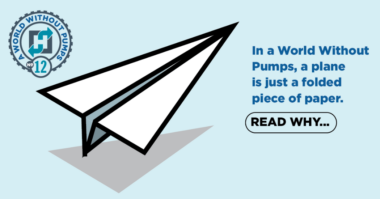The WateReuse Research Foundation announces the release of a how-to guide for building support for potable reuse on the statewide and community levels. Model Communication Plans for Increasing Awareness and Fostering Acceptance of Direct Potable Reuse (WRRF-13-02) provides a roadmap for advancing public acceptance of potable reuse projects by building support and awareness of existing and planned potable reuse programs and by fostering an understanding of the great need to continue to expand water supply sources.
This resource provides those involved with planning a potable reuse project with a catalog of promising and proven methods and messages for advancing potable reuse. A combination of literature review, face-to-face meetings, and public opinion research indicated that public acceptance of potable reuse can be achieved by implementing a coordinated, consistent, and transparent communication plan.
“We know that potable reuse projects use safe and proven technology, but how a project sponsor engages the community is critical to the success of a project. These model communication plans are extremely important,” said WateReuse Executive Director Melissa Meeker.
This project is the first of a two-phase approach toward fostering acceptance of potable reuse. To develop the communication plans for the first phase, a team led by Principal Investigators Mark Millan of Data Instincts, Patricia A. Tennyson of Katz & Associates, and Shane Snyder of the University of Arizona first conducted an extensive literature review of previous research related to potable reuse acceptance and to attempted approaches at communication. Next, a series of one-on-one meetings was held with individuals involved with potable reuse projects in their communities, legislators, and special interest groups.
The findings from the literature review and interviews were used to develop a set of messages that were then tested in focus groups and in telephone surveys in two communities. A key finding from the focus groups and telephone surveys showed that after receiving additional information about potable reuse and the multi-stage treatment process used to make the water safe to drink, most participants became more comfortable with the idea of potable reuse.
“This has been an incredibly robust research effort involving scores of people with various disciplines. The good news is that communication plans developed will be useful for any potable reuse project, whether indirect or direct. Large or small,” Millan said.
Completion of the model communication plans provides the strategic groundwork for Phase II of the WateReuse approach to fostering public acceptance of potable reuse. Phase II will take the information gleaned from Phase I and use it to begin creating and refining outreach materials and methods. Phase I drew the outline of the plans, and Phase II will create the tools that can be used immediately at the statewide level and in local communities that are considering direct potable reuse (DPR).
This project was funded by the WateReuse Research Foundation in cooperation with the Metropolitan Water District of Southern California.
The report and model communication plans are available at the following url: http://www.watereuse.org/product/13-02-1.





Comments